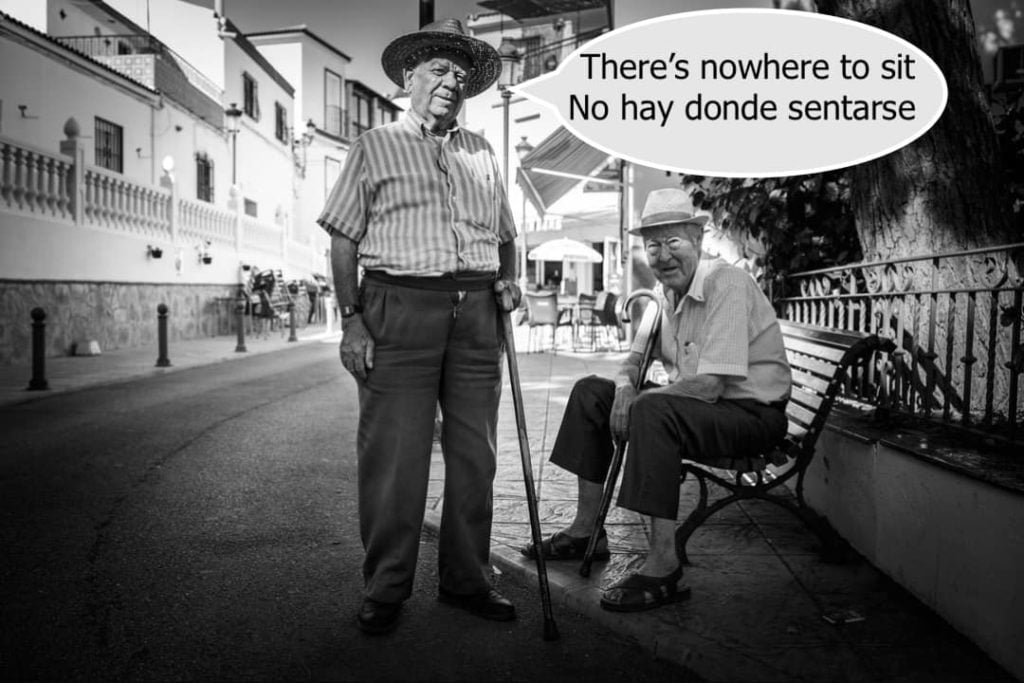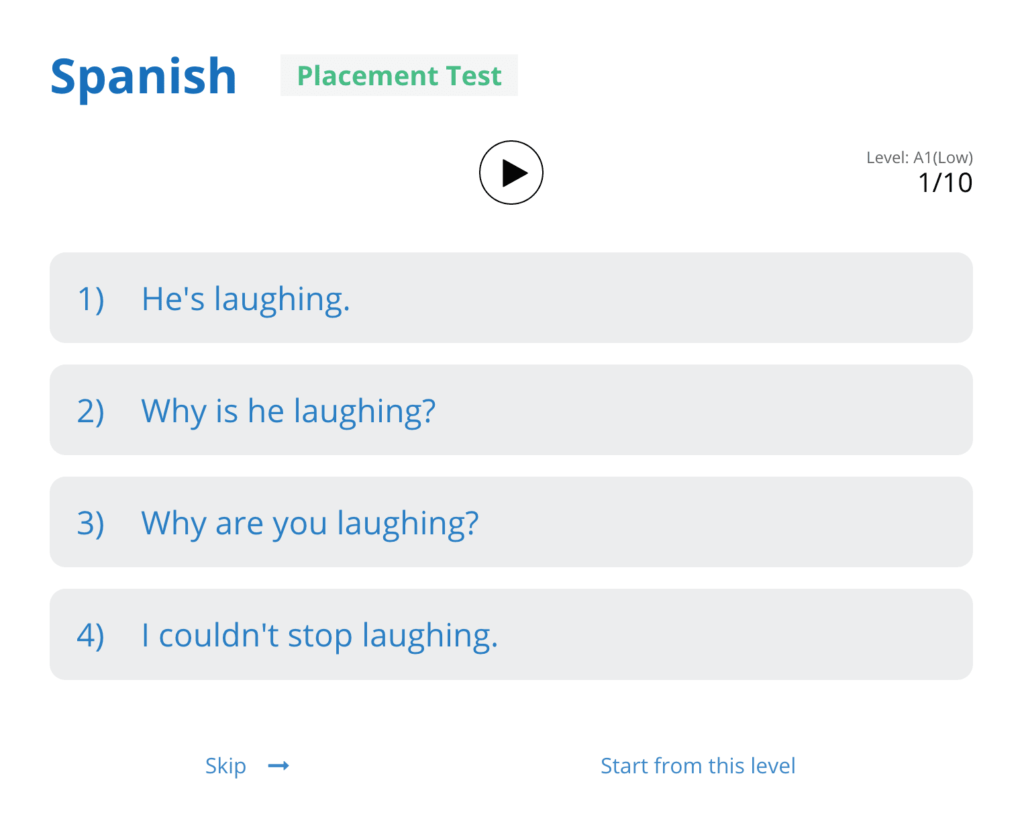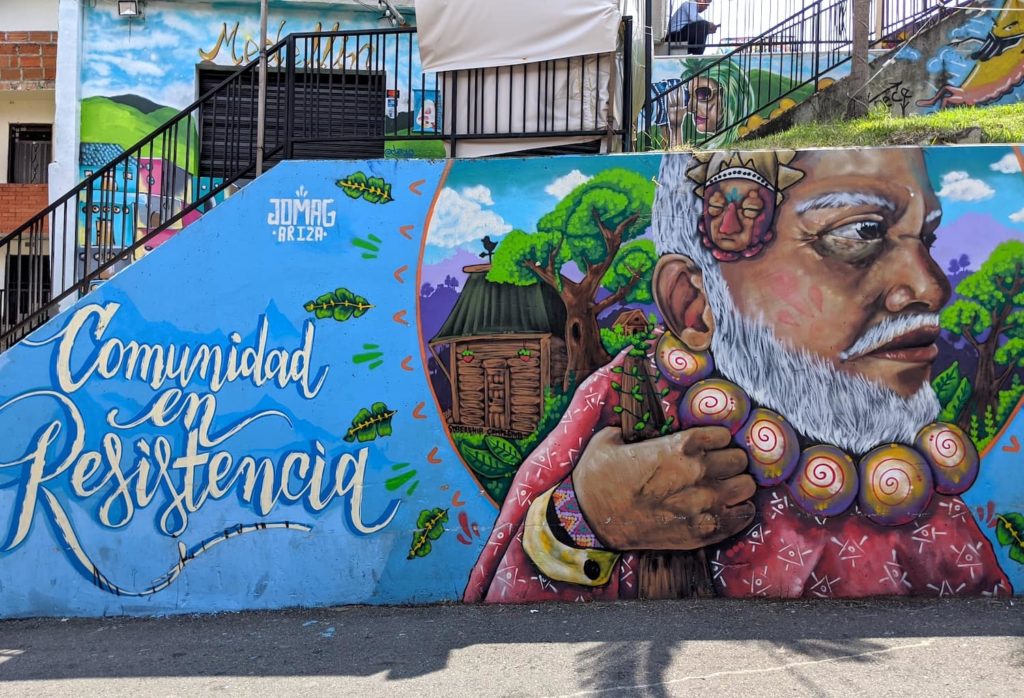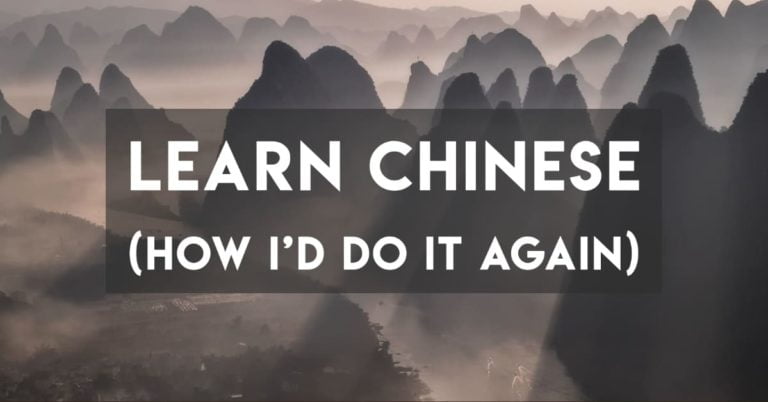Glossika Spanish Review — Exhaustive Spanish-Specific Analysis
This is our Glossika Spanish review — how good Glossika is for Spanish learners, how to use Glossika to learn Spanish quickly, and tips for using Glossika in general.
Glossika is one of our favourite apps for immersive language learning.
But since Glossika covers over sixty languages, people often would wonder how good it is for specific languages. After all, with so many languages, aren’t they spreading themselves a little thin?
That’s why we decided to do a deep dive into Glossika (and other apps, down the pipeline) to see how good it is for individual languages. And this is our first one — not just a Glossika review (we already did one of those), but our Glossika Spanish review.
Enjoy!
Try Glossika for a Week for Free
Try Glossika’s method of teaching language through thousands of sample sentences. Learn languages by sentences spoken by native speakers in over 60 languages.

Contents
Glossika Spanish Review — In Brief
In this guide, we’re going to go over
- A quick Glossika overview — review of the “listen and repeat” method of language learning
- Why Glossika, and why not one of the alternatives/competitors
- How good Glossika is for Spanish
- How to get started with Glossika Spanish
- What else you’ll need (like a textbook and a tutor)
- What Glossika costs, and how the trial works
- A bit about ourselves as Spanish learners/speakers
We’ll try to be as objective as possible in our discussion. Our goal, as with everything on this site, is to help people bridge cultural gaps by learning another language. Even though we get a small referral credit for everyone who joins Glossika, that’s not why we recommend it — we do because it’s an incredible resource for language learners.
Quick Glossika Overview — How “Listen and Repeat” works
First, a quick overview of how Glossika works.
At its core, Glossika is a sentence bank. There are 60+ languages, and you can use any one of those languages to learn any other.
So if you speak Russian as your mother tongue, for example, you can set it up so you hear one sentence in Russian, and the second in Spanish. Thus, you learn a whole phrase in Spanish, and connect it with the equivalent whole phrase in Russian (or your mother tongue).
The goal of any sentence bank is to teach you whole sentences rather than words in isolation.
The benefit of learning whole sentences is you don’t get lost in false friends or in phrasing.
Take the phrase “¿Desea un café, señor?“. If you learned the verbs and nouns in this phrase, you’d hear it as the literal translation of “Do you desire a coffee, sir?“, which sounds unnatural.
But through Glossika, you learn that it means “Would you like a coffee, sir?”. Learning a whole phrase rather than an individual verb helps you learn the most natural phrasing — it helps you hear it as well as to say it.
This isn’t just true in Spanish; it’s true in every language we’ve learned. Even though we’re big fans of learning vocabulary and language rules (it’s one of the reasons we think in many ways it’s easier to learn a language as an adult), it needs to all come together in a complete sentence.
But how does Glossika teach you sentences? It’s a fairly simple process:
- You do a placement test
- You choose the subjects you’re interested in, and
- You start being drip-fed sentences, repeating them every day.

Every day you can add zero new sentences if you like, or add more in chunks of five. Every sentence becomes part of your revision pipeline.
Gradually, you increase in level and go through the many levels that Glossika covers, from A1(Low) to … actually I don’t know what the highest is, as by then I moved on to other things (that was well over 20,000 reps). It’s above B2!
Why Glossika?
There are a few sentence bank type apps out there.
For years, we’ve used Glossika, learning sentences in multiple languages as a way to sound more natural. We’ve used it for Swahili, Egyptian Arabic, Hebrew, Persian, and Korean extensively. (And dabbled in a few others, but not seriously).
Where Glossika really stands out is in its language selection. Once you pay for Glossika’s membership, you can learn any one of over sixty languages, and switch between them at any point.
You can also learn from a greater variety of languages. This is a real boon for anyone who is fluent in a less-spoken language and wants to use that as a basis for learning Spanish.
It’s worth mentioning that Glossika has a newer competitor, Speechling. I really like Speechling — it has a huge sentence bank, it has a nice app, and the provide a lot of content for free. We’re doing a big comparison on Glossika vs Speechling — it’s a work in progress, but there it is.
There are two main advantages Glossika has over Speechling, though:
- Glossika has 60+ languages, including some endangered ones, and you can switch between them. As language learners, we tend to be interested in a lot of things. If you want to try your ear with some dialect of Chinese or a bit of Northern Vietnamese, Glossika is a better bet.
- It’s easy to get started with Glossika. I dawdled with Speechling for ages, because I couldn’t figure out how to use it. There are lots of features and things to poke around, and it’s hard to figure out what your level is (I always under-estimate, because I want to make sure I know all the easy stuff!)

Is Glossika Spanish good?
Let’s now look at whether Glossika is good specifically for Spanish.
Sentence banks sound really easy. Just “listen and repeat” is their claim. But it’s only after studying a language for a while that you understand the vagaries of whether it’s good for a certain language, and how to get the most out of it.
I’ll break down this analysis into how effectively Glossika teaches the core building blocks of understanding and speaking a language: grammar, vocabulary, listening comprehension, and pronunciation.
Pronunciation
Pronunciation is where Glossika shines, because there’s no better way to get better at pronunciation than immersing yourself in sounds and then trying to repeat them.
When I was first learning Spanish (a couple of decades ago), I spent a lot of time with language tapes. I’d listen to the dialogues and repeat every sentence. If it was an important one, I’d repeat it until I knew exactly what it meant and how to use it.
Glossika Spanish is even better for this for a few reasons
- The sentences are individual so I don’t have to learn a whole dialogue, sometimes with useless parts in it
- There are two main accents in Glossika you can learn — Spanish (Continental) Spanish and Mexican Spanish (yes, it could stand to have more accents, like Colombian and Argentinian, but I dare say that Continental and Mexican covers the lion’s share of the target market of Spanish speakers
How to get the most out of learning pronunciation with Glossika: Actually say the sentences out loud!
It’s OK to mumble. But say them. It’s really tempting to just listen and say “I got this”. But it’s only when you speak out loud — or better, record yourself — that you really understand how hard it is to pronounce the erre and other diabolical letters.
Glossika European vs Latin American Spanish
There’s more to the regionalities of Spanish than just accent. But to begin with, the accents are 100% on point.
I’ve checked out both the Latin American (which is Mexican in this case) and the European versions of Glossika Spanish and I’m satisfied that the accents are correct in each one, AND that they’re translated differently.
In the European version, they pronounce the zeta and ce (before an i or e) as an English soft “th”. They don’t do this everywhere in Spain (e.g. they don’t in the South), but this pronunciation is so associated with the European Spanish accent that I think it’s accurate.
The Latin American Spanish version has the kind of pronunciation you’d expect in Mexico. Again, this isn’t representative of all Spanish in Latin America (it lacks the Argentinian voseo for example, or other features of Argentinian Spanish), but it’s still comprehensible by everyone.
Both the European and Mexican version of Spanish are recorded in very high quality, with pronunciations clearly enunciated by readers with excellent diction.
And it should be noted that the Mexican and European versions of Glossika Spanish appear to have been translated independently.
Comparing sentences from both, they’re often quite different, even when they don’t have to be.
For example, the sentence “¡Esto es ridículo!” (European) is presented as “¡Esto es absurdo!” in Mexican Spanish. Same with “Me gustarían unos huevos revueltos.” vs “Quisiera unos huevos revueltos.“
In reality, in those two cases (and many others), either sentence would work in either country/region. But it’s nice that they’ve been translated independently, to ensure that every sentence has had fresh eyes on it by someone from the region.
Another point is that the Mexican Spanish version correctly prefers the “ustedes” plural form, even in informal sentences. (e.g. “Tu y Jack van a ir…“). In the second person though, randomly either the Mexican or European Spanish version will opt for tu or usted, without any pattern. Go figure!
Grammar
Learning grammar via Glossika is a lot harder. In fact, for most adult learners, I’d say that Glossika is not enough by itself and you need to study the grammar separately.
That’s why our full review of Glossika makes clear that it’s not the only language-learning tool you’ll need.
Why can Glossika not teach you grammar? Well, according to Glossika’s philosophy and marketing, it’s not as important as learning a whole phrase.
I know the principle of this is true. When I speak Spanish, I don’t think about grammar and conjugation. I just say the words that I know express what I’m trying to say.
But that came on a solid foundation of grammar. Grammar gets me through the difficult phrases that I don’t yet know how to say, and gives me confidence that when I’ve said something, I’ve said it correctly.
As adults, we’re really good at learning rules. If I explain grammar rules to you, like that conjugations go quiero, quieres, quiere, queremos, quereís, quieren, you’ll get it quickly. A child may not, but if you’re reading this, then you’re probably not a child. (If you are… well, bravo. You’re awesome!)
So what I’d suggest is that Glossika is not good for the absolute beginner Spanish language learner. I would suggest you at least know how to build sentences, the rules about adjective agreement, and basic conjugation before you get started with Glossika. (See the section on getting started with Glossika in this Glossika Spanish review for more on that.)
In summary:
- Use a textbook to learn the rules of basic grammar — sentence structure, conjugation of Spanish verbs, and noun/adjective agreement
- Use Glossika as a huge resource of example sentences to drill these in.
Vocabulary
Learning vocabulary with Glossika Spanish is another important part I wanted to mention in this review.
Sometimes, it’s really useful to just rote memorize a list of words. Some examples of this are a) fruits, vegetables, and other common foods, b) animals, c) names of things in nature, d) things and places in the city, and e) colours and numbers.
But in other situations, like with verbs and adjectives, it’s more important to learn the words in action. Because while verbs might look the same, the way you use them is quite different.
This is where Glossika is really good. For example, the word moneda usually means “coin” in English. But when you learn the sentence “The dollar is the currency of many countries”, you’ll see that the Spanish word also uses moneda as the word for “currency”.
Now, you could just learn that “moneda” means “currency”, too, but learning it in the context of a sentence really helps it “stick” in your head. The more things you associate it with in your head — pictures, memories, sounds, people, situations — the better.
So, in summary
- Use Glossika to learn how to use verbs and adjectives (and many everyday nouns) in everyday life
- Use another resource to fill in the gaps and rote memorise important words to you.
Listening Comprehension
Glossika is great for listening comprehension. But it’s not all you need.
Because you hear sentences in isolation, there’s one thing that Glossika doesn’t teach you, and that’s how to absorb the general idea of a long passage.
When you hear something in your native language, you don’t have time to focus on individual words and phrases. You’re forced to try to absorb a general idea and to respond to that. It’s more like a marathon.
But learning with Glossika is more like a circuit training class in the gym, where you get to do quick sets of things and then move on. In a circuit class, you go in there and do sets of bicep curls and lunge squats and sumo deadlift inverse high pull tempo Persian squat presses*, then take a break before doing something different. Similarly, in Glossika, after every sentence, there’s a pause in which you have time to digest what it has said and parse it.
But conversations or listening to the radio aren’t anything like a quick workout. There’s no pause to digest. Sentences keep flowing, until it’s time to respond. So what do you do?
Glossika is still a good foundation for listening comprehension practise. But it’s no substitute for immersion in long conversation.
So here’s what to do:
- Use Glossika to get started in understanding longer and longer sentences. It will definitely help.
- Do other immersive listening — listen to the radio, podcasts, or to TV shows in Spanish, trying to understand as much as possible.
- Get a language partner on italki to really practise speaking in a live environment (if that’s important to you)
* Not a real thing. Don’t try this.
Ready to give Glossika a try? Sign up for the free trial!
Try Glossika for a Week for Free
Try Glossika’s method of teaching language through thousands of sample sentences. Learn languages by sentences spoken by native speakers in over 60 languages.
Getting Started with Glossika Spanish — Some quick tips for people of different levels
I want to have a dedicated section in this Glossika Spanish review on how to get the most out of Glossika depending on your level.
Of course, one of the first things you do in Glossika is a language test. But what I’m talking about is, depending on your level
- What materials you should use before using Glossika
- What materials you should use alongside Glossika (and at what levels)
- When you can stop using Glossika
Complete beginner (Elementary) in Spanish? Use a book first.
Books? Boring! You don’t have time for books! You’ll just pick up Duolingo or whatever.
Nothing wrong with Duolingo. It’s fun. But it will take you a LONG time to get very far with it, and even really far in, you won’t understand what’s going on.
Solution: Get a simple book, a “Teach Yourself Spanish” type book and go through the first 5-6 chapters (about 1/3 to halfway).
You need to learn these concepts in Spanish before you seriously start to use Glossika
- How verbs work — the basics of Spanish conjugation. We don’t conjugate much in English. You might pick this up quickly if you speak another language already, especially if it’s another Latin-derived language like French, Italian, Portuguese and so on.
- Agreement and gender. You need to learn about masculine and feminine nouns, and how to make adjectives agree with them.
- All your basic language building blocks — pronouns (persona, direct, object, subject), conjunctions, interrogatives
- Basics of pronunciation — what to expect when you see an ll or an ñ. Also how to pronounce the “¿” and “¡”. Just kidding (but this is something I wondered when I started out! I had no idea. Shows how far a person can come.)
- Numbers, days of the week — Glossika teaches this to you piecemeal. There’s no harm in learning these separately.
- Greetings and basic phrases. For some reason, Glossika’s approach isn’t to teach you “how are you” and “I’m fine”.
A bit more on greetings and basic phrases. In every language I learn (or have learned), I find that the first bits of any basic conversation are something like this:
- Them: (in English) “Oh, so you’re learning my language? What can you say to me?”
- Me: (in target language) “Well, I study every day. But I still don’t speak very well.”
- Them: (in target language) “Wow so good! You speak so well!”
- Me: “No, no. I have much to learn.”
Then, other things maybe. So the more fluently I can say those things, the better the conversation will go.
Glossika doesn’t teach you those phrases! It more teaches you a series of other random phrases, with the hope that you’ll be better equipped to make it up.
So what I’d suggest if you’re a complete beginner — DON’T start with Glossika.
Do this:
- Learn all those things I mentioned above — not fluently, but get a solid foundation — before using Glossika
- Then use Glossika.
Beginner-Intermediate — Use Glossika, but don’t stop using flashcards and tutors
Glossika is best for anyone in the beginner (not elementary) and intermediate levels.
These are the levels where you have to practise, practise, practise, listening to sentences, learning words in action, and repeating them to really drill them in.
But Glossika isn’t the only thing you should use. I’d highly suggest that alongside Glossika you use
- Flashcards. Use Anki. It’s the gold standard. Make your own decks, record your voice, and repeat as much as you need to. Glossika isn’t really flashcard-like, even though there’s a bit of spaced repetition in there.
- Tutors. If you’re interested in speaking, you need to keep using tutors.
Advanced — You can probably move on.
There are a few languages (Chinese, Spanish, French, Persian, and whatever other is the one being refreshed from recent usage in a country) in which I’m firmly in the C-levels. For these languages, while I could still use Glossika if it were the only convenient option, I don’t find it as useful as doing other things that are much closer to my interests.
For those languages, I much prefer to
- Listen to music and try to learn the lyrics (really only in French, because I like French hip hop… it makes me feel cooler than I am)
- Listen to podcasts, especially very conversational/jokey ones
- Watch TV series on YouTube with subtitles (see our guide on language learning with Netflix)
At the advanced level, Glossika feels like a homework chore, whereas watching a TV show and listening to a podcast is fun. It’s more sustainable and realistic to do things that are beneficial to your language learning as well as being fun.
In fact, I couldn’t seem to get placed above B2 in Glossika’s placement test, even though I answered everything correctly. (I got something wrong once but I disagreed with what they thought was right… but I did the test again anyway… does it remember? Maybe it does!)

So if you’re at an advanced level where you can hold an extended conversation on any topic, understand most of podcasts and can watch TV without excruciating trouble, then do those things and put Glossika behind you.
The only time I’d suggest Glossika for advanced learners is for
- Obscure languages with few resources (i.e. not Spanish), and/or
- If you really need a mindless audio-only option that has no time limit — e.g. if you’re going on a very long trip
What else you’ll need apart from Glossika
As we mention (a lot), there’s no one tool that’s a silver bullet. Even if you’re slaying vampires, you need a wooden stake, and probably some other stuff.

Here’s what we definitely, definitely recommend you use in addition to Glossika for learning Spanish.
Books. You need to learn grammar and rules. Spanish is hard, and I don’t really think the approach of just fumbling along and guessing rules is a productive one. Learn all the things I mentioned in the section for elementary/complete beginners above in “getting started“.
A dictionary. You don’t need anything fancy, but my favourite one for Spanish is (and has been for over 10 years) wordreference.com.
Tutors. If speaking is your priority, you need to speak with a real human. I’m always shocked at how little I know the moment I open my mouth to a stranger! We are big fans of italki for on-demand, reasonably-priced tutors.
So you might be wondering “How fluent can I get JUST with Glossika?” and we think it’d be meaningless to answer that question — it’d be purely hypothetical. Nobody would do that, and nobody would recommend doing that — not even the team at Glossika.
Those are enough to help you get started. Glossika will help, assuming you have all those already.
What Glossika costs
Very briefly, Glossika costs
- US$29.95 month-to-month
- $24.95 if you buy it annually (i.e. $300 for the whole year).
Occasionally, Glossika has sales, where they discount by 30-40%.
You can also try Glossika for a week for free. Don’t stress too much — if you need more time for your trial, email them and ask. Sometimes, they accept (no guarantees, of course.)
Try Glossika for a Week for Free
Try Glossika’s method of teaching language through thousands of sample sentences. Learn languages by sentences spoken by native speakers in over 60 languages.
A bit about ourselves as Spanish speakers
I’ve spoken Spanish since the age of 20 (and I’m now … a lot older).
I learned it first from one book, then a series of other books, all with “cassette tapes”. Then, I sat in conversation classes, and finally, I went to Spain for a while to teach English and learn Spanish on the side.
Since then, I’ve always had Spanish-speaking friends from all over the world. I’ve visited a few Latin American countries, including an extended stay in Colombia. I’ve also worked in Spain in which I worked in a 100% Spanish-speaking environment.
Being a bit of a nerd, I’m obsessive about learning rules and exceptions. At some point, I knew them all! (Well, quite a lot.) These days I’m a lot more casual in my language-learning. I wouldn’t work as a professional interpreter, but I did once enjoy translating between a Chinese and Spanish mechanic on the shop floor between their respective native languages. I just did OK, but it was really fun.
Jo is an intermediate Spanish speaker. She learned it in school in California and has also travelled to quite a few Spanish-speaking countries (including with me to Colombia, where we learned to dance from teachers who only spoke to us in Spanish). We sometimes spoke to each other just in Spanish, but only for fun.






